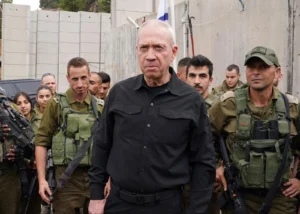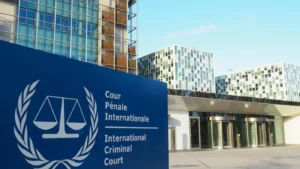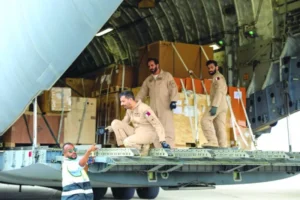Time to implement first AU reforms
PRETORIA, South Africa, January 9, 2018/ — The 30th summit of the African Union (AU) will take place on 29–30 January 2018 in Addis Ababa. One year after the election of a new commission chaired by former Chadian foreign minister Moussa Faki Mahamat, the stakes at this summit are high. Two critical issues will impact on the relevance of the AU as a regional mechanism: firstly, the continuation of the reforms proposed by Rwandan President Paul Kagame, who is set to chair the organisation in 2018; and secondly, the adoption of a protocol of free movement that will further the integration of the continent.
One year after the endorsement of the Kagame report by the AU Assembly, the reform plan is supposed to see the next level of implementation at the summit. So far, the AU Commission has set up the Reform Implementation Unit (RIU), chaired by former Cameroonian foreign minister Pierre Moukoko Mbonjo, in the office of the chairperson as the coordination body for the implementation of the reforms.
According to the implementation matrix shared by Kagame, four recommendations are supposed to be implemented in January 2018:
The adoption of a mechanism to ensure the implementation of legally binding decisions: This measure touches on the very nature of the AU as an intergovernmental organisation where member states often use their own sovereignty as an excuse not to implement continental decisions. The challenge is to establish a body that will ensure that member states comply with their legal commitments while taking into account the historical opposition from African heads of state and government to any kind of supra-nationality at the pan-African level.
The strengthening and enforcement of a sanctions mechanism: This will test the ability of AU member states to limit their sovereignty for the sake of the institutional impact of pan-African bodies.
The completion of the audit identifying bureaucratic inefficiencies: This audit will likely launch an internal reflection on the responsibilities of the chairperson; the division of labour between the chairperson and his/her deputy; the structure of the commission; and the status of AU agencies such as the New Partnership for Africa’s Development (NEPAD).
The adoption of quotas for women and youth among AU staff and measures to ensure the participation of the private sector: One important question here relates to the definition of ‘youth’, as age groups vary from one country to another.
Three recommendations on the implementation process are supposed to have an interim output in January 2018:
The clarification of the division of labour between the AU, regional economic communities (RECs) and other institutions such as NEPAD.
The review of mandates and strengthening of key organs: There is likely to be a focus on the role of the Permanent Representatives Committee (PRC), which consists of ambassadors to Addis Ababa. The role of the PRC has been the subject of divergence and incoherence among member states and regions. The Kagame report stressed that the PRC should not be an oversight body of the AU Commission but rather act as a channel between the capitals and Addis Ababa. Yet some regions have emphasised the role of the PRC as a critical body for engaging with the AU Commission on a day-to-day basis. The Constitutive Act is not precise on the matter, as it only describes the role of the PRC as ‘the responsibility of preparing the work of the Executive Council and acting on [its] instructions’.
The identification and provision of continent-wide public goods and services, in order to bring the AU closer to citizens: The panel has yet to clarify what is meant by ‘public goods and services’. This recommendation implies a debate on the global positioning of the AU: should the organisation position itself as an implementation body or should it limit itself to policy drafting and coordination?
Three recommendations are set to be implemented in January 2018:
The review of the partnership summit framework to have the AU represented by the Troika and the AUC Chairperson during summits with outside partners such as the European Union, China, Japan and the United States: The challenge is the ability of AU heads of state and government to overcome their internal divisions and accept such a delegation of power in a continent where recognition of supra-national powers is still limited at both the national and regional level. It is also not known what the operational consequences of a new framework would be in a context where bilateralism remains the norm in terms of development assistance and other issues.
The establishment of an annual AU–REC coordination summit in July, replacing the second AU summit: This will depend on the clarification of the division of labour between the regional and continental levels. Issues such as trade and migration will become critical areas in such a summit after the adoption of the Common Free Trade Area and the Protocol of Free Movement of People, in order to ensure harmonisation and coordination between the continental and regional regimes.
The establishment of a troika composed of the previous, current and future chairs of the AU Assembly: The current Troika – composed of Idriss Déby, Alpha Condé and Kagame – overseeing the reform has been criticised for its lack of representativeness, as the Northern and Southern regions are not represented. The establishment of this troika will require amendments to the Constitutive Act and the rules of procedure of the AU Assembly. The tradition of consensus within the AU on such matters means that a compromise has to be reached regarding the issue of representation. At the moment the AU chair is elected with a bureau composed of three vice-chairpersons (currently Yoweri Museveni, Abdelaziz Bouteflika and King Mswati III) and a rapporteur (currently Déby). The roles of both the bureau and the chairperson need to be clarified.
Many member states are concerned that the establishment of the troika will increase the role of the chairperson at the expense of the AU Assembly, despite the fact that its duties are mostly procedural.
While member states may be in agreement about choosing the AU chairperson for the following year in advance, this issue is likely to be another an opportunity for member states that have reservations regarding other aspects of the reforms, to express them.
Free movement in view
Seventeen years after the creation of the AU, the adoption of a protocol on the free movement of people, fostering the integration of the continent, is still outstanding. This issue has seen significant progress in 2017 as many rounds of negotiations took place in Accra, Kigali and Mauritius, leading up to a consensus around the phased implementation of the right of entry by 2023. At the January summit the AU Assembly is set to decide on the implementation of the rights to entry, residency and establishment using the model of the Economic Community of West African States (ECOWAS), which has followed a similar phased-in implementation.
Despite these significant advances, two critical issues will have to be resolved during the summit: firstly, the entry into force of the protocol, and secondly, the binding character of the implementation plan.
Regarding the first issue, some member states favour an adoption of the protocol once the minimum quota of ratifications (15) is reached. Other member states and some in the AU Commission favour an entry into force immediately after the protocol is adopted by the AU Assembly.
Apart from these legal challenges, another critical issue is to convince regional powers tratify the protocol. So far, small and middle-sized states (Ghana, Rwanda, Mauritius and Kenya) have been at the forefront of the efforts towards free movement. The modalities of adoption of the protocol will thus reveal the dynamics around the integration of the continent. Will small and middle-sized states be the engine of African integration while regional powers constitute the brakes?
Secondly, there are questions around the binding character of the implementation plan that accompanies the protocol. This document was a prerequisite set by some regional powers in order to ensure certain steps are followed and criteria are met before guaranteeing full right to entry in 2023. These regional powers want the implementation plan to be included in the protocol, making it binding on all AU member states.
Other member states, however, would prefer the implementation plan to be an annex to the protocol, thus ensuring more flexibility. It is uncertain whether regional powers will settle for an option that cancels the binding nature of some requirements, for example those regarding the modernisation of civil registries or border controls.
From a political perspective, the adoption of the protocol of free movement will require the AU to reassure concerned states and citizens that this development does not mean the disappearance of border controls, but rather constitutes a critical step towards the enhanced and coordinated management of the movement of people.





